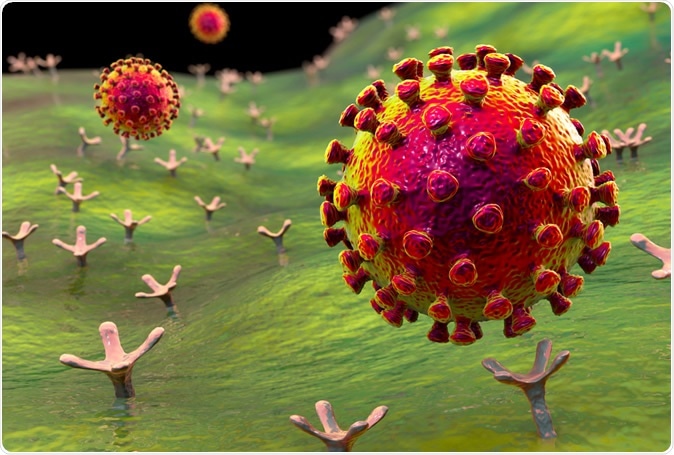Since the novel coronavirus first emerged in Wuhan City in China, over the past three months, it has spread across the globe. It has now affected 185 countries and territories, infecting 2.7 million people. With the rapid spread of the virus, it prompted many scientists to join the race in identifying a treatment for the coronavirus disease (COVID-19).
The virus, which first started to spread in December 2019, targets the respiratory tract, but the exact structures are not clear. Now, the researchers from the Massachusetts Institute of Technology (MIT) have identified specific types of cells that are targets of the SARS-CoV-2 that causes the COVID-19 pandemic. The findings of the study published in the journal Cell may help in developing novel therapeutics to combat the deadly viral infection.
Cell targets of SARS-CoV-2
Working with Ragon Institute and Broad Institute, along with international colleagues worldwide, the team revealed the cells in the respiratory tract that are at high risk of being invaded by the novel coronavirus. Using data on the RNA found in the various types of cells, the team found cells that express the two proteins that aid the novel coronavirus in entering human cells.
"As soon as we realized that the role of these proteins had been biochemically confirmed, we started looking to see where those genes were in our existing datasets. We were really in a good position to start to investigate which are the cells that this virus might actually target," Jose Ordovas-Montanes, a former MIT postdoc who now runs his lab at Boston Children's Hospital, explained.
Soon after the start of the pandemic, the scientists found that a viral "spike" protein binds to a receptor on humans cells, called the angiotensin-converting enzyme 2 (ACE2). Another human protein, dubbed as the TMPRSS2, activates the coronavirus spike protein, aiding the entry of the virus into human cells. Due to the combined binding and activation process, the virus finds its way into the cells.

SARS-CoV-2 viruses binding to ACE-2 receptors on a human cell, the initial stage of COVID-19 infection, conceptual 3D illustration credit: Kateryna Kon / Shutterstock
The team found that the Type II pneumocytes in the lungs, goblet secretory cells in the nasal passages, and the absorptive enterocytes in the intestines were potential targets of the virus.
The goblet secretory cells in the nasal passages work by producing mucus. The cells also express RNAs for both the proteins that the coronavirus uses to infect and invade cells. In the lungs, the team found that the RNAs for the two proteins were seen in Type II pneumocytes, which line the air sacs or alveoli, the functional unit if the respiratory tract where gas exchange happens. The team also found that the cells called absorptive enterocytes in the intestines, which plays a vital role in the absorption of nutrients, express the RNAs for the two proteins.
The target cells may explain the common signs and symptoms tied to COVID-19. Patients may manifest cough, sore throat, the difficulty of breathing, and in some cases, gastrointestinal symptoms, such as diarrhea.
Therapeutic targets
The team hopes that the findings of the study will help guide scientists who are working on developing drugs and therapies to combat COVID-19. The findings may also help those who are currently testing and repurposing approved drugs, which may be effective in treating patients infected with the novel coronavirus.
"Our goal is to get information out to the community and to share data as soon as is humanly possible so that we can help accelerate ongoing efforts in the scientific and medical communities," Alex K. Shalek, the Pfizer-Laubach Career Development Associate Professor of Chemistry, a core member of MIT's Institute for Medical Engineering and Science (IMES), said in a statement.
The COVID-19 pandemic has sickened millions of people and has so far killed more than 183,000 people worldwide. The hardest-hit country is the United States, with more than 840,000 confirmed cases and 46,611 deaths. European countries are grappling with the vast spread of the virus, with Italy, France, Spain, Germany, and the United Kingdom report the highest number of cases.
Spain reports more than 208,000 cases, followed by Italy with 187,327 cases, France with 157,135 cases, Germany with 150,648 cases, and the United Kingdom with 134,638 cases.
Sources:
Journal reference: